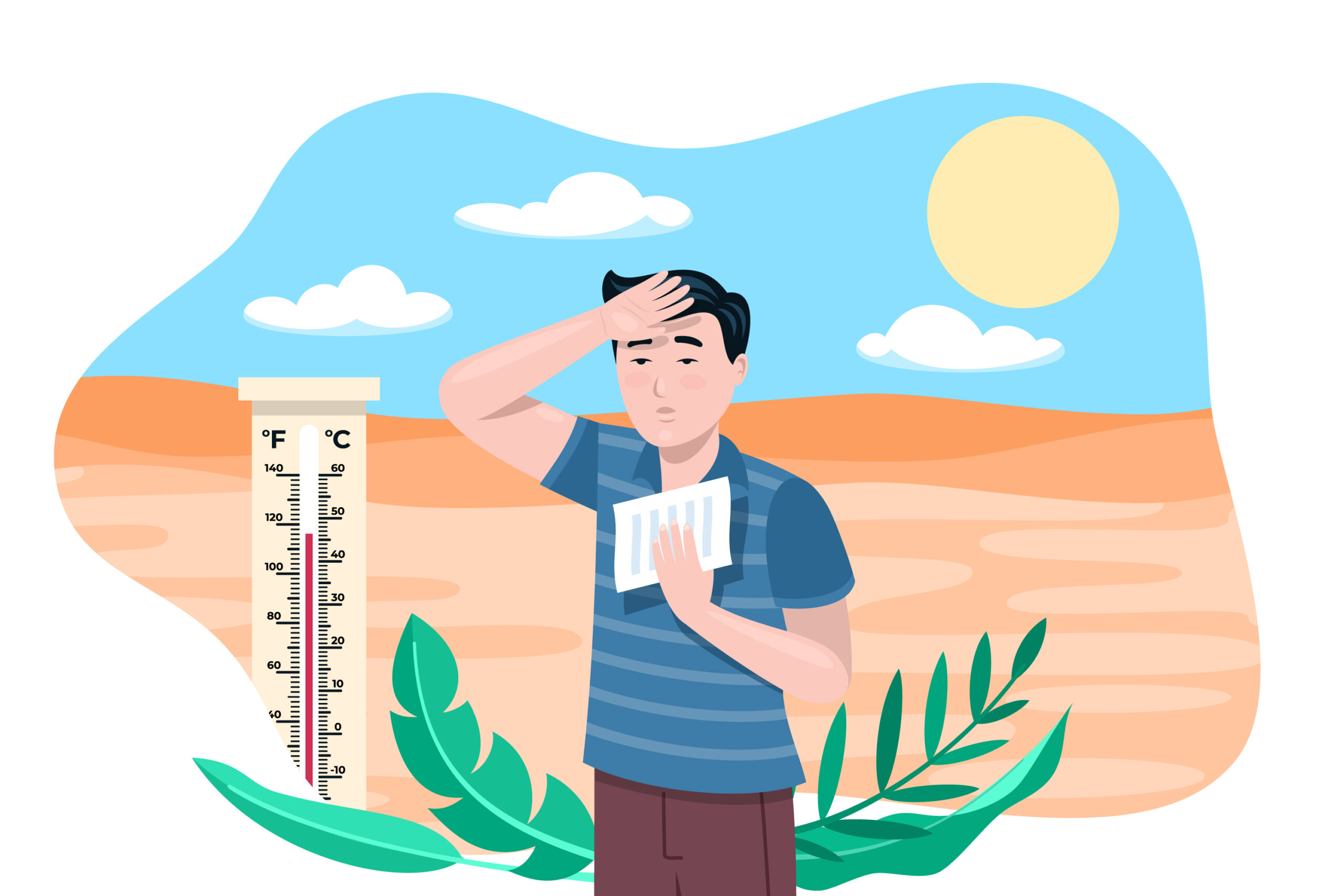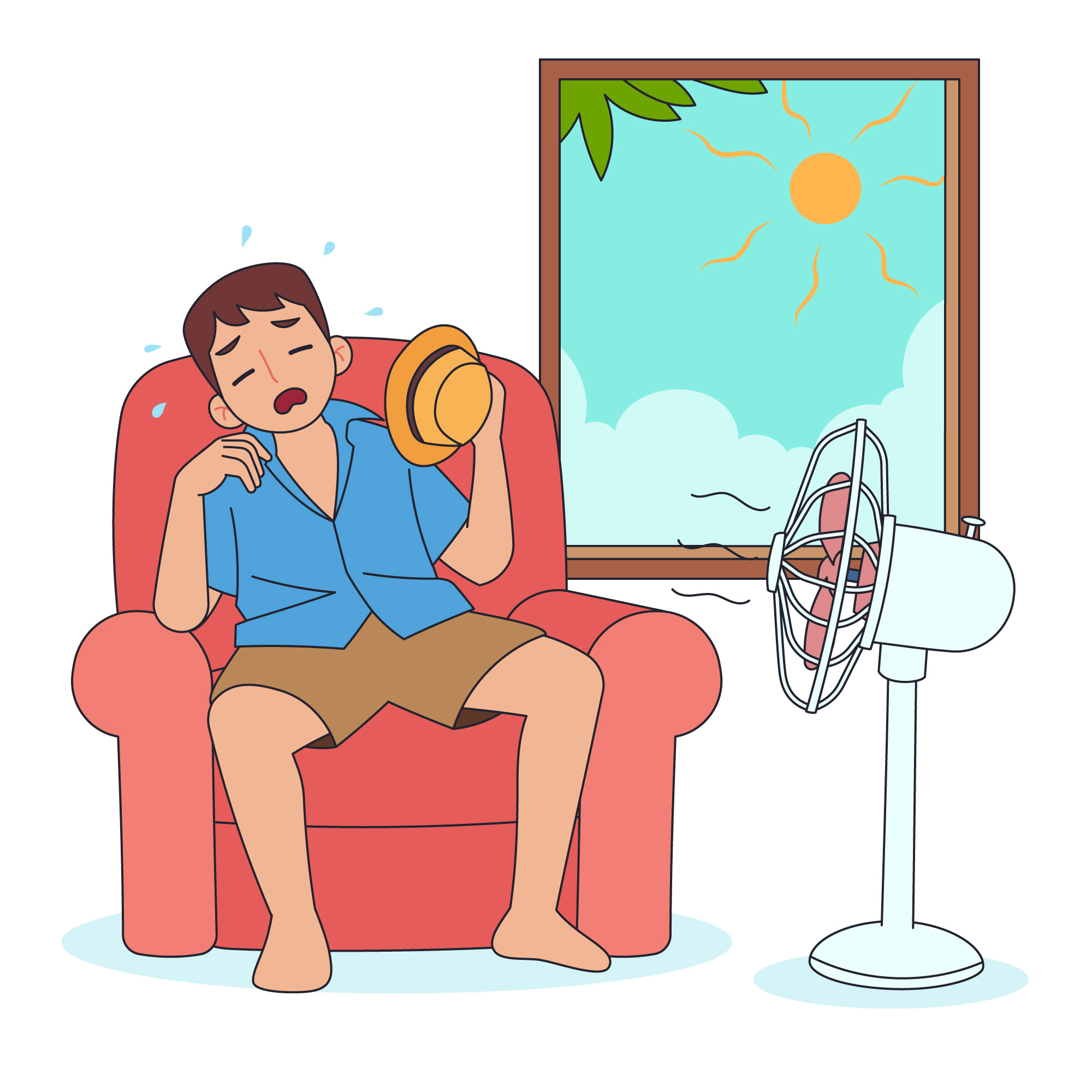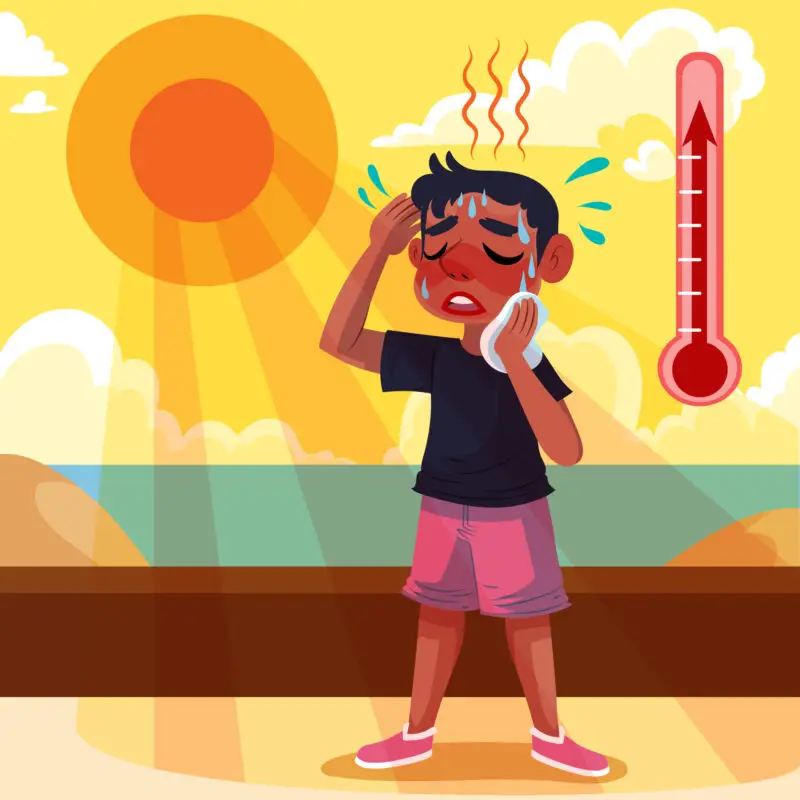TL;DR Heat stroke Vs. Heat exhaustion
Heat stroke is a severe medical emergency that occurs when the body’s temperature regulation system fails due to prolonged exposure to high temperatures. It can lead to organ damage and even death if not treated promptly.
Heat exhaustion is a milder condition that typically develops after extended periods of physical activity in hot weather.
What is heat stroke?

Heat stroke is a severe and potentially life-threatening condition resulting from prolonged exposure to high temperatures, often in hot and humid weather.
It occurs when the body’s temperature-regulating mechanisms fail, causing the core body temperature to rise to dangerous levels (typically above 104°F or 40°C). Symptoms include hot and dry skin, a rapid heartbeat, confusion, nausea, and sometimes loss of consciousness.
Immediate medical attention is crucial to cool the body and prevent organ damage. Heat stroke can be prevented by staying hydrated, avoiding excessive heat, and taking breaks in cooler environments during extreme heat.
What is and heat exhaustion?

Heat exhaustion is a heat-related illness caused by excessive heat and dehydration. It’s a less severe condition than heat stroke but still serious.
It often occurs in hot and humid conditions when the body loses more fluids and electrolytes through sweating than it can replace.
Symptoms include heavy sweating, weakness, dizziness, nausea, rapid heartbeat, and cool, clammy skin. If left untreated, it can progress to heat stroke.
Treatment involves moving to a cooler place, rehydration with water and electrolyte solutions, and resting. It’s essential to recognize the signs and take steps to prevent heat exhaustion, such as staying hydrated and staying cool in hot weather.
Heat stroke Vs. Heat exhaustion – Key differences
| Aspect | Heat Stroke | Heat Exhaustion |
|---|---|---|
| Severity | Severe and life-threatening condition. | Less severe but still serious. |
| Core body temperature | Core temperature typically rises above 104°F (40°C). | Core temperature elevated but generally below 104°F. |
| Skin condition | Skin is often hot, dry, and flushed. | Skin may be cool, clammy, or moist. |
| Sweating | Lack of sweating or minimal sweating. | Profuse sweating is common. |
| Symptoms | Symptoms may include confusion, loss of consciousness, rapid heartbeat. | Symptoms may include weakness, dizziness, nausea, and a rapid heartbeat. |
| Immediate action | Requires immediate medical attention. | Can often be managed by moving to a cooler place, rehydration, and rest. |
| Long-term effects | Can lead to organ damage, brain injury, and even death if not treated promptly. | Typically does not lead to severe long-term effects when managed appropriately. |
| Risk factors | Often occurs after prolonged exposure to extreme heat, especially in hot and humid conditions. | Can happen in hot and humid conditions, particularly with strenuous activity and insufficient fluid intake. |
Heat stroke Vs. Heat exhaustion – Symptoms
Heat Stroke
- High body temperature (above 104°F or 40°C)
- Hot, dry skin (lack of sweating)
- Rapid pulse or heartbeat
- Rapid, shallow breathing
- Confusion, agitation, or delirium
- Nausea and vomiting
- Severe headache
- Seizures
- Loss of consciousness or fainting
- Neurological symptoms like disorientation or coma
Heat Exhaustion
- Profuse sweating
- Pale, clammy, or moist skin
- Weakness or fatigue
- Dizziness or lightheadedness
- Rapid heartbeat
- Muscle cramps
- Nausea or vomiting
- Headache
- Feeling faint or lightheaded
- Cool and moist skin
It’s important to note that heat exhaustion symptoms can progress to heat stroke if not treated promptly. If you suspect heat stroke, seek immediate medical attention. If someone exhibits heat exhaustion symptoms, move them to a cooler place, rehydrate them, and ensure they rest.
Image Credits
Featured Image By – Freepik
Image 1 By – Freepik
Image 2 By – Freepik








